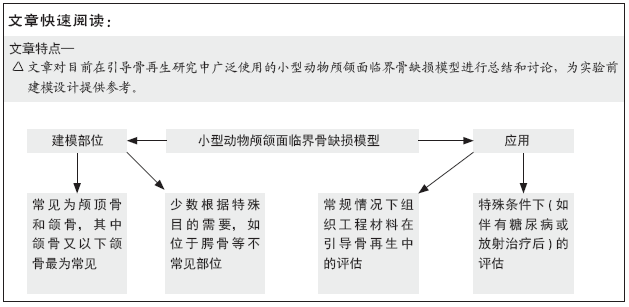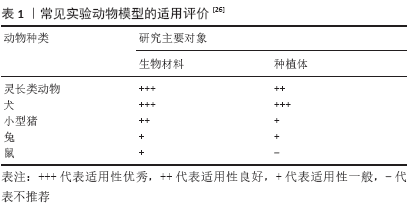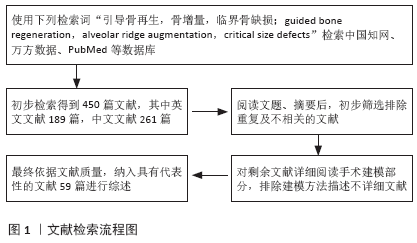[1] CHIAPASCO M, CASENTINI P. Horizontal bone‐augmentation procedures in implant dentistry: prosthetically guided regeneration. Periodontol 2000. 2018;77(1):213-240.
[2] NAENNI N, SCHNEIDER D, JUNG RE, et al. Randomized clinical study assessing two membranes for guided bone regeneration of peri‐implant bone defects: clinical and histological outcomes at 6 months.Clin Oral Implants Res. 2017;28(10):1309-1317.
[3] SØREN J, CATON JG, ALBANDAR JM, et al. Periodontal manifestations of systemic diseases and developmental and acquired conditions: Consensus report of workgroup 3 of the 2017 World Workshop on the Classification of Periodontal and Peri-Implant Diseases and Conditions. J Periodontol. 2018;89 Suppl 1:S237-S248.
[4] ELGALI I, OMAR O, DAHLIN C, et al. Guided bone regeneration: materials and biological mechanisms revisited. Eur J Oral Sci. 2017;125(5):315-337.
[5] 周敏月,聂敏海,陈潇,等.组织工程修复牙槽骨临界骨缺损的研究进展[J].西南军医,2020,22(1):51-54.
[6] WATAHA JC. Effect of cell line on in vitro metal ion cytotoxicity. Dent Mater. 1994;10(3):156-161.
[7] FREITAS NR, GUERRINI LB, ESPER LA, et al. Evaluation of photobiomodulation therapy associated with guided bone regeneration in critical size defects. In vivo study. J Appl Oral Sci. 2018;26:e20170244.
[8] HELGELAND E, SHANBHAG S, PEDERSEN TO,et al. Scaffold-Based Temporomandibular Joint Tissue Regeneration in Experimental Animal Models: A Systematic Review. Tissue Eng Part B Rev. 2018;24(4):300-316.
[9] 严霞,张亚楠,孟增东.构建骨缺损植入材料非人灵长类动物模型的研究与进展[J].中国组织工程研究,2018,22(31):5021-5026.
[10] LIEBSCHNER MA. Biomechanical considerations of animal models used in tissue engineering of bone. Biomaterials. 2004;25(9):1697-1714.
[11] GOTTLOW J, NYMAN S, KARRING T, et al. New attachment formation as the result of controlled tissue regeneration. J Clin Periodontol. 1984;11(8): 494-503.
[12] AVANTIKA N, SAKSHI G, BALJEET S, et al. Bone Augmentation Materials and Membranes Used In Implant Therapies with Guided Bone Regeneration Technique. Baba Farid University Dental Journal. 2017;7(1):76-81.
[13] 张璇,李云朋,张雪健,等.预成型钛网联合生物膜在美学区引导骨组织的再生[J].中国组织工程研究,2020,24(26):4112-4117.
[14] KHOJASTEH A, KHEIRI L, MOTAMEDIAN SR, et al. Guided Bone Regeneration for the Reconstruction of Alveolar Bone Defects.Ann Maxillofac Surg. 2017; 7(2):263-277.
[15] SCHMITZ JP, HOLLINGER JO. The Critical Size Defect as an Experimental Model for Craniomandibulofacial Nonunions. Clin Orthop Relat Res. 1986; (205):299-308.
[16] WANG J, GLIMCHER MJ. Characterization of Matrix-Induced Osteogenesis in Rat Calvarial Bone Defects: I. Differences in the Cellular Response to Demineralized Bone Matrix Implanted in Calvarial Defects and in Subcutaneous Sites. Calcif Tissue Int. 1999;65(2):156-165.
[17] SHAH SR, YOUNG SK, GOLDMAN JL, et al. A composite critical-size rabbit mandibular defect for evaluation of craniofacial tissue regeneration. Nature Protocols. 2016;11(10):1989-2009.
[18] SUSIN C, LEE J, FIORINI T, et al. Screening of candidate biomaterials for alveolar augmentation using a critical-size rat calvaria defect model. J Clin Periodontol. 2018;45(7):884-893.
[19] AALAMI O, NACAMULI RP, LENTON KA, et al. Applications of a mouse model of calvarial healing: Differences in regenerative abilities of juveniles and adults. Plast Reconstr Surg. 2004;114(3):713-720.
[20] SANZHERRERA JA, REINAROMO E. Cell-Biomaterial Mechanical Interaction in the Framework of Tissue Engineering: Insights, Computational Modeling and Perspectives. Int J Mol Sci. 2011;12(11):8217-8244.
[21] WILLIAMSDAVID F. A Paradigm for the Evaluation of Tissue-Engineering Biomaterials and Templates. Tissue Eng Part C Methods. 2017;23(12): 926-937.
[22] BIGHAMSADEGH A, ORYAN A. Selection of animal models for pre-clinical strategies in evaluating the fracture healing, bone graft substitutes and bone tissue regeneration and engineering. Connect Tissue Res. 2015;56(3): 175-194.
[23] ANDERSEN ML, WINTER LMF. Animal models in biological and biomedical research - experimental and ethical concerns. An Acad Bras Cienc. 2019; 91(suppl 1):e20170238.
[24] AKAR B, TATARA A M, SUTRADHAR A, et al. Large Animal Models of an In Vivo Bioreactor for Engineering Vascularized Bone. Tissue Eng Part B Rev. 2018;24(4):317-325.
[25] STUBINGER S, DARD M. The Rabbit as Experimental Model for Research in Implant Dentistry and Related Tissue Regeneration. J Invest Surg. 2013; 26(5):266-282.
[26] STRUILLOU X, BOUTIGNY H, SOUEIDAN A, et al.Experimental animal models in periodontology: a review. Open Dent J. 2010;4:37-47.
[27] DAHLIN C, LINDE A, GOTTLOW J, et al. Healing of bone defects by guided tissue regeneration. Plast Reconstr Surg. 1988;81(5):672-676.
[28] HAN J,MA B,LIU H, et al. Hydroxyapatite nanowires modified polylactic acid membrane plays barrier/osteoinduction dual roles and promotes bone regeneration in a rat mandible defect model. J Biomed Mater Res A. 2018;106(12):3099-3110.
[29] MILLER MQ, MCCOLL LF, ARUL MR, et al. Assessment of Hedgehog Signaling Pathway Activation for Craniofacial Bone Regeneration in a Critical-Sized Rat Mandibular Defect. JAMA Facial Plastic Surgery. 2019;21(2):110-117.
[30] LIU G, GUO Y, ZHANG L, et al. A standardized rat burr hole defect model to study maxillofacial bone regeneration. Acta Biomater. 2019;86:450-464.
[31] CAMPILLO VE, LANGONNET S, PIERREFEU A, et al. Anatomic and histological study of the rabbit mandible as an experimental model for wound healing and surgical therapies. Lab Anim. 2014;48(4):273-277.
[32] SHAH SR, YOUNG SK, GOLDMAN JL, et al. A composite critical-size rabbit mandibular defect for evaluation of craniofacial tissue regeneration. Nat Protoc. 2016;11(10):1989-2009.
[33] LYE KW, TIDEMAN H, WOLKE J, et al. Biocompatibility and bone formation with porous modified PMMA in normal and irradiated mandibular tissue. Clin Oral Implants Res. 2013;24 Suppl A100:100-109.
[34] Dahlin C, Alberius P, Linde A, et al. Osteopromotion for cranioplasty: An experimental study in rats using a membrane technique. J Neurosurg. 1991;74(3):487-491.
[35] Fadel RA, Samarani R, Chakar C, et al. Guided bone regeneration in calvarial critical size bony defect using a double-layer resorbable collagen membrane covering a xenograft: a histological and histomorphometric study in rats. Oral Maxillofac Surg. 2018;22(2):203-213.
[36] Donos N, Dereka X E, Mardas N, et al. Experimental models for guided bone regeneration in healthy and medically compromised conditions. Periodontol 2000. 2015;68(1):99-121.
[37] Aroni MA, De Oliveira GJ, Spolidorio LC, et al. Loading deproteinized bovine bone with strontium enhances bone regeneration in rat calvarial critical size defects. Clin Oral Investig. 2019;23(4):1605-1614.
[38] RAFTERY RM, MENCIACASTANO I, SPERGER S, et al. Delivery of the improved BMP-2-Advanced plasmid DNA within a gene-activated scaffold accelerates mesenchymal stem cell osteogenesis and critical size defect repair. J Control Release. 2018;283:20-31.
[39] BROGGINI N, HOFSTETTER W, HUNZIKER EB, et al.The Influence of PRP on Early Bone Formation in Membrane Protected Defects. A Histological and Histomorphometric Study in the Rabbit Calvaria.Clin Implant Dent Relat Res. 2011;13(1):1-12.
[40] SALAMANCA E, HSU CC, HUANG HM, et al. Bone regeneration using a porcine bone substitute collagen composite in vitro and in vivo.Sci Rep. 2018;8(1):984.
[41] CHEN C, TIEN H, CHUANG C, et al. A comparison of the bone regeneration and soft‐tissue‐formation capabilities of various injectable‐grafting materials in a rabbit calvarial defect model. J Biomed Mater Res B Appl Biomater. 2019;107(3):529-544.
[42] 宫玮玉,刘绍清,董艳梅,等.纳米生物活性玻璃促进兔颅骨临界骨缺损修复[J].北京大学学报(医学版),2018,50(1):42-48.
[43] PELEGRINE AA, ALOISE AC, ZIMMERMANN A, et al. Repair of critical‐size bone defects using bone marrow stromal cells: a histomorphometric study in rabbit calvaria. Part I: Use of fresh bone marrow or bone marrow mononuclear fraction. Clin Oral Implants Res. 2014;25(5):567-572.
[44] 何通文,徐庚池,韩耀辉,等.构建兔颅顶骨临界骨缺损模型:确立颅顶临界骨缺损的参考值[J].中国组织工程研究,2014,18(18):2789-2794.
[45] MATZEN M, KOSTOPOULOS L, KARRING T, et al. Healing of Osseous Submucous Cleft Palates with Guided Bone Regeneration.Scand J Plast Reconstr Surg Hand Surg. 1996;30(3):161-167.
[46] MARDAS N, KOSTOPOULOS L, KARRING T, et al. Bone and suture regeneration in calvarial defects by e-PTFE-membranes and demineralized bone matrix and the impact on calvarial growth: An experimental study in the rat.J Craniofac Surg. 2002;13(3):453-462; discussion 462-464.
[47] 王乐旬,吴惠娟,张盛昔,等.不同建模方法对链脲霉素诱导1型糖尿病成模率的影响[J].广东药科大学学报,2019,35(6):763-767.
[48] MJ DB, HUYNH N, DEO M, et al. Defining the Progression of Diabetic Cardiomyopathy in a Mouse Model of Type 1 Diabetes.Front Physiol. 2020; 11:124.
[49] RETZEPI M, LEWIS MP, DONOS N, et al. Effect of diabetes and metabolic control on de novo bone formation following guided bone regeneration.Clin Oral Implants Res. 2010;21(1):71-79.
[50] CHENG K, LIN Z, CHENG Y, et al. Wound Healing in Streptozotocin-Induced Diabetic Rats Using Atmospheric-Pressure Argon Plasma Jet.Sci Rep. 2018; 8(1):12214.
[51] XIAO L, UENO D, CATROS S, et al. Fibroblast Growth Factor-2 Isoform (Low Molecular Weight/18 kDa) Overexpression in Preosteoblast Cells Promotes Bone Regeneration in Critical Size Calvarial Defects in Male Mice. Endocrinology. 2014;155(3):965-974.
[52] SIQUEIRA JT, CAVALHERMACHADO SC, ARANACHAVEZ VE, et al. Bone Formation Around Titanium Implants in the Rat Tibia: Role of Insulin.Implant Dent. 2003;12(3):242-251.
[53] 林枭,李豫皖,吴向东,等.探讨糖尿病对兔膝前交叉韧带重建术后骨隧道的影响[J].重庆医科大学学报,2019,44(9):1118-1126.
[54] RETZEPI M, CALCIOLARI E, WALL I, et al. The effect of experimental diabetes and glycaemic control on guided bone regeneration: histology and gene expression analyses. Clin Oral Implants Res. 2018;29(2):139-154.
[55] AN H, LEE J, OH SE, et al. Adjunctive hyperbaric oxygen therapy for irradiated rat calvarial defects. J Periodontal Implant Sci. 2019;49(1):2-13.
[56] JEGOUX F, MALARD O, GOYENVALLE E, et al. Radiation effects on bone healing and reconstruction: interpretation of the literature. Oral Surg Oral Med Oral Pathol Oral Radiol Endod. 2010;109(2):173-184.
[57] JUNG H, LEE J, LEE S, et al. Development of an experimental model for radiation-induced inhibition of cranial bone regeneration. Maxillofac Plast Reconstr Surg. 2018;40(1):34.
[58] PARK K, KIM C, PARK W, et al. Bone Regeneration Effect of Hyperbaric Oxygen Therapy Duration on Calvarial Defects in Irradiated Rats.Biomed Res Int. 2019;2019:9051713.
[59] JEGOUX F, AGUADO E, COGNET R, et al. Alveolar ridge augmentation in irradiated rabbit mandibles. J Biomed Mater Res A. 2010;93(4):1519-1526.
|


